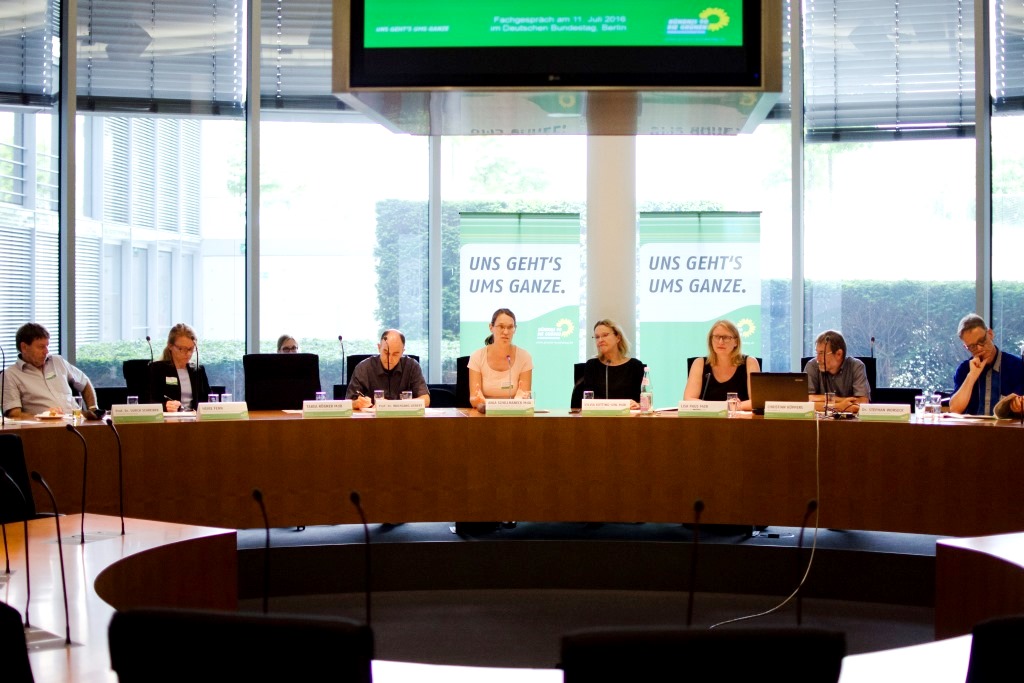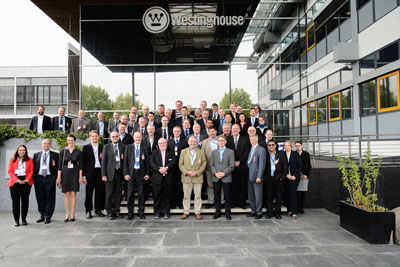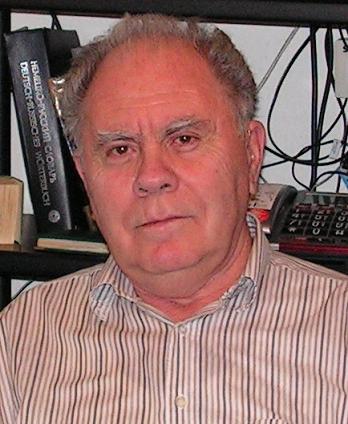KIW´s Veröffentlichen und Internationale Kooperation
Vladimir I. Kartsovnik. Elastic Entropic Forces in Polymer Deformation. 2022
The entropic nature of elasticity of long molecular chains and reticulated materials is discussed concerning the analysis of flows of polymer melts and elastomer deformation in the framework of Frenkel–Eyring molecular kinetic theory. Deformation curves are calculated in line with the simple viscoelasticity models where the activation energy of viscous flow depends on the magnitude of elastic entropic forces of the stretched macromolecules. The interconnections between deformation processes and the structure of elastomer networks, as well as their mutual influence on each other, are considered.
Vladimir Kartsovnik. Relationship between the Deformation ... and Their Molecular Structure. 2021
Journal of Macromolecular Science, Part B. Physics. 2021. "Relationship between the Deformation Processes Occurring in Rubbers and Their Molecular Structure (Structure of Rubbers under Strain)"
V. I. Kartsovnik (2021)
The Society of Sciences & Engineering Registered Community "KIW-Gesellschaft e.V.", Dresden, Germany /
http://doi.org/10.1080/00222348.2021.2005914
Based on measurements of rubber hysteresis curves, the relationship between the network structure of elastomers and their mechanical behavior is analyzed. On the basis of the classical theory of rubber elasticity, the Flory corrections, which take into account physical cross-links in the elastomer network structures in the course of straining a rubber sample at a constant rate, were calculated. To this end, the Frenkel-Eyring thermal-fluctuation theory was used, also taking into account the activation energy of the polymer viscosity, which depends on the entropic elasticity of macromolecules in the processes of their flow and deformation. Flory corrections were calculated within the standard linear solid model.
Dr.-Ing. Juri Tsoglin. ON THE POSSIBILITY OF CREATING AN IN-CORE MONITORING SYSTEM ...

ON THE POSSIBILITY OF CREATING AN IN-CORE MONITORING SYSTEM FOR A POWER REACTOR ON THE BASIS OF THE ALTERNATIVE PHYSICAL IDEOLOGY OF ENERGY RELEASE MONITORING by Dr.-Ing. Juri Tsoglin The Society of Sciences & Engineering „KIW- Gesellschaft e. V“, Dresden, Germany, Diese E-Mail-Adresse ist vor Spambots geschützt! Zur Anzeige muss JavaScript eingeschaltet sein!
The results of calculations and experiments proving the possibility of creating in-core monitoring system (IMS) of a pressurized water-water power reactor on the basis of the measurement of the gamma radiation intensity from the reactor core with an original calorimetric gamma detector with a built-in calibration element are pre-sented.
Background and problem statement
In the early 80s, the Nuclear Research Institute of the Academy of Sciences of Ukraine began de-velopment of an IMS system for the 2nd unit of the Armenian NPP. Initially, the unconventional principle of energy release control — by monitoring the field of gamma radiation of the reactor core — was taken as the basis of the physical ideology of the IMS system. Therefore, the system was designated experimental and named EIMS "Sevan".
In the early 80s, the Nuclear Research Institute of the Academy of Sciences of Ukraine began de-velopment of an IMS system for the 2nd unit of the Armenian NPP. Initially, the unconventional principle of energy release control — by monitoring the field of gamma radiation of the reactor core — was taken as the basis of the physical ideology of the IMS system. Therefore, the system was designated experimental and named EIMS "Sevan".
There were the following backgrounds to put such a task:
Dr.-Ing. Juri Tsoglin. Über die Machbarkeit einer Uran- und Abfallfreien Produktion ...

Über die Machbarkeit einer Uran- und Abfallfreien Produktion von 99Mo im industriellen Maßstab von Dr.-Ing. Yuriy Tsoglin. The Society of Sciences & Engineering KIW- Gesellschaft e. V, Dresden, Germany, Diese E-Mail-Adresse ist vor Spambots geschützt! Zur Anzeige muss JavaScript eingeschaltet sein!
I. Geschichte des Problems, Voraussetzungen Noch vor kurzem litt die Welt unter ernsten Schwierigkeiten bei der Versorgung mit Molybdän99.
Davon zeugt die Pressemitteilung des Deutschen Verbandes für Nuklearmedizin vom Februar 2010. Es handelte sich um den auf dem Nuklearmedizinischen Kongress (Leipzig, 21.-24. April 2010) gehaltenen Vortrag „G E“. Im August desselben Jahres wurde das Problem von der EU-Kommission beraten und schließlich wurde zu diesem Thema am 14. September von der SPD-Bundestagsfraktion eine Anfrage (32 Punkte) an die Bundesregierung gerichtet.
99Mo ist das Ausgangsnuklid für Technetium 99mTc, das so genannte „Arbeitspferd“ der Nuklear-medizin. Seine Halbwertzeit beträgt 6 Stunden. Indem es einen Gamma-Quant mit einer Energie von 140 keV ausstrahlt, verwandelt es sich in das praktisch stabile Isotop 99Tc mit einer Halb- wertzeit von 214000 Jahren. Photonen dieser Energie sind gut mit einem Gamma-Kamera genannten Gerät zu registrieren. Das 99mTc lagert sich in speziellen, mit dem Ausgangsnuklid 99Mo beladenen, Technetium-Generatoren (Mo/Tc Generator) ab.
99Mo hat eine Halbwertzeit von 66 Stunden. Das in dieser Zeit erhaltene 99mTc wird aus dem Generator befördert und durch eine Sorbtionssäule, die eine Lösung von NaCl, Al2O3, 99Mo und 99mTc enthält, hindurch geleitet. Die NaCl-Lösung wäscht das Technetium aus, in dem es die Verbindung Na299mTcO4, das Natriumpertechnitat, bildet. Das 99Mo bleibt in der Sorbtions- säule zurück. Eine weitere Abscheidung ist in ungefähr 24 Stunden möglich, wenn sich wieder genügend 99mTc angesammelt hat. Dieser Vorgang kann in einem Generator bis zu fünf Tage lang wiederholt werden, dann muss der Generator ausgetauscht werden. Wegen der kurzen Halbwertzeit von 99Mo ist es nicht möglich, Vorräte von beladenen Generatoren anzulegen. Sie müssen wöchentlich oder noch häufiger angeliefert werden.
Dr.-Ing. Juri Tsoglin. Possible Solutions for Improving Operational Safety of NPP

Possible Solutions for Improving Operational Safety of NPP by Dr.-Ing. Juri Tsoglin The Society of Sciences & Engineering „KIW- Gesellschaft e. V“, Dresden, Germany, Diese E-Mail-Adresse ist vor Spambots geschützt! Zur Anzeige muss JavaScript eingeschaltet sein!
Following the accident in Fukushima Daiichi NPP stability of NPP against external conditions was verified by applying stress-tests and achievement of high-level operational safety satisfying “international requirements” was declared all over the world.
Nevertheless, given the experience of at least two accidents – Armenian NPP in 1982 and Chernobyl in 1986 (the author had been involved in elimination of consequences of the latter) – we shouldn’t have made this declaration with such confidence. Internal latent factors remained out of sight – appearing to become possible sources of accidents or of their progressing. These factors did not make themselves known before the specific situation and therefore don’t appear in any document type of “Probabilistic Safety Analysis” or “Safety Analysis Report” and can’t be discovered using stress-tests.
Some of the hidden factors and possible ways of overcoming them have been investigated in the present paper.
1.One is In-core Monitoring Systems (IMS) based on the ideology of the neutron monitoring and neutron detectors acting as primary transducers. A hidden defect, not taken into account in the safety analysis could be caused on one hand by the absence of a reliable metrological maintenance of neutron detectors and on the other hand by the influence of the processes of burning out detector fuel and materials (processes burnout) on the reliability of the measurements and the resulting information. Accounting for these factors is associated with the large volume of related assumptions, additional data and auxiliary computing operations [1, 2]. This leads to the presence of software of huge complexity in today’s ICMS, which may result in failure of standard systems in an emergency situation to give the information necessary for adequate decision-making.
The defect can be eliminated if we include in neutron IMS a system based on monitoring thickness of the gamma radiation flux, which is accurately connected to quantify the fission rate.
Vladimir I. Kartsovnik. Prediction of the Creep of Elastomers Taking ... 2018
Journal of Macromolecular Science, Part B. Physics. 2018. "Prediction of the Creep of Elastomers Taking into Account the Forces of Entropie Elasticity of Macromolecules (Prediction of Creep of Elastomers)"
V. I. Kartsovnik (2018)
The Society of Sciences & Engineering Registered Community "KIW-Gesellschaft e.V.", Dresden, Germany /
http://doi.org/10.1080/00222348.2018.1470836
Accounting for the increase in the energy of activation of viscous flow of polymers by an amount proportional to the force of entropic elasticity of the stretched macromolecules, allows for a quantitative description of the curves of deformation of elastomers in the models of Kelvin Voigt and the Standard linear solid. For these models, application of a rubber like elasticity modulus, increasing with the increase of deformation, enables cakulation of Flory's correction factor for the network defects for the deformation curves of a rubber. The curves of creep of Silicone rubbers under constant load for various temperatures were measured. For the Kelvin Voigt model differential equations the dependence of the coefficients of linear approximations of these equations on loadings and temperatures were measured. The possibility to predict the time of achieving given creep values based on the proposed Kelvin Voigt model equations were demonstrated.
Vladimir I. Kartsovnik. Calculation of the Viscosity of Polymer Melts Based ... 2016
Journal of Macromolecular Science, Part B. Physics. 2016. Vol. 55, Nr. 2, S.149-157
"Calculation of the Viscosity of Polymer Melts Based on Measurements of the Recovered Rubber-Like Deformation"
V. I. Kartsovnik, R. Worlitsch, F. Hermann, and J.Tsoglin /
The Society of Sciences & Engineering Registered Community "KIW-Gesellschaft e.V.", Dresden, Germany /
RHE0TEST Medingen Ltd., Ottendorf-Okrilla, Germany
http://dx.doi.org/10.1080/002223482015.1119340
On the basis of a model of polymer flow, considering the forces of entropic elasticity of extended macromolecules within the Eyring's concept, the relationships between the shear rate, shear stress, viscosity, and recovered rubber-like deformation were derived. The reduction of activation energy of the flow, by an amount proportional to the recovered rubber-like deformation, leads to an exponential decrease of viscosity with increasing shear rates; this nonlinear dependence of viscosity on shear rate (and shear stress) is defined as the viscosity anomaly of polymers. The measurement of deformation recovery alter the cessation of polymer flow in the mode of constant shear rate or shear stress on a rotational viscometer confirmed the validity of the theoretical dependences.
Vladimir I. Kartsovnik. Changes of Activation Energy during Deformation of Rubber. 2011
Journal of Macromolecular Science, Part B. Physics
Based on a simple molecular model, a mechanism of rubber flow characterized by viscosity increasing with the reversible rubber-like deformation is proposed. It is associated with an activation energy of viscous flow that increases proportionally to an external stress due to the entropy elasticity of macromolecules. This increase of the activation energy for jumping of molecular-kinetic units of a polymer network into vacancies during the rubber deformation process is caused by an increasing resistance of the stretching macromolecular network due to the entropy nature of macromolecule deformation.
Vladimir I. Kartsovnik. On the mechanism of the flow of polymers. 2007
Abstract:
A non-Newtonian flow of a polymer melt is discussed. The description of the exponential decrease of the apparent viscosity by the well-known Eyring formula with an activation energy reduction proportional to the shear stress does not take into account specific features of the polymeric structure. We propose to modify the description of the macromolecular flow mechanism by including conformational changes of the polymeric chains. The elasticity of a strained polymeric chain, having an entropy origin, can be the reason of the reduction of the activation energy for the transition of a molecular-kinetic unit of the chain into a new equilibrium state in the flow direction during the thermal fluctuations. In that case, the activation energy of the transition should decrease by a value proportional to the reversible high-elastic component of the shear deformation caused by the flow of the polymer.
Dr. Tsoglin – Teilnehmer der Fachtagung „Forschungsreaktoren in Deutschland ... “
 Unser Vorstandsvorsitzender Dr. Tsoglin – Teilnehmer der Fachtagung "Forschungsreaktoren in Deutschland – Probleme und Herausforderungen" (Fraktion "Bündnis 90/ die Grünen").
Unser Vorstandsvorsitzender Dr. Tsoglin – Teilnehmer der Fachtagung "Forschungsreaktoren in Deutschland – Probleme und Herausforderungen" (Fraktion "Bündnis 90/ die Grünen").
Perspektive Kerntechnik. September 2015 in Mannheim
 Am 7. und 8. September 2015 lud das Deutsche Atom-Forum in Kooperation mit der Westinghouse Electric Germany GmbH nach Mannheim ein zum Kompetenznetzwerk Forschung und Lehre unter dem Motto "Perspektive Kerntechnik".
Am 7. und 8. September 2015 lud das Deutsche Atom-Forum in Kooperation mit der Westinghouse Electric Germany GmbH nach Mannheim ein zum Kompetenznetzwerk Forschung und Lehre unter dem Motto "Perspektive Kerntechnik".
Seite 1 von 2



